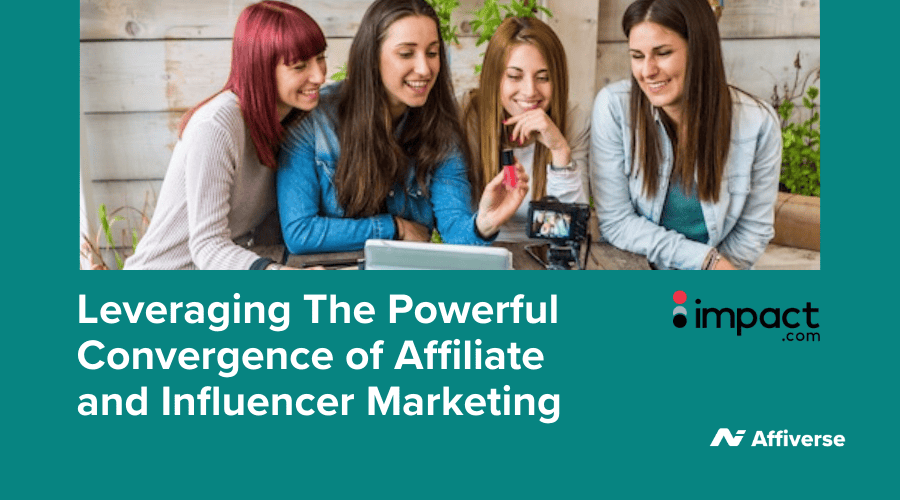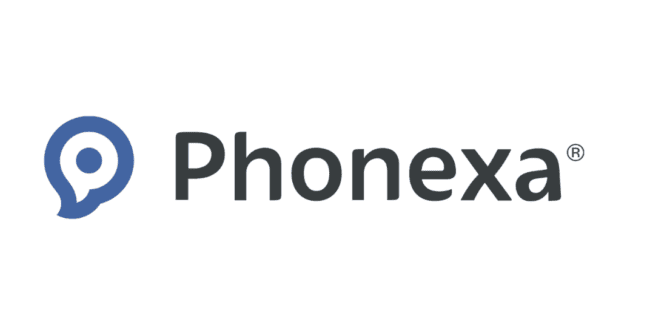Leveraging The Powerful Convergence of Affiliate and Influencer Marketing

Cristy Garcia, CMO of impact.com, examines how the lines between affiliate and influencer/creator marketing are blurring and how this is redefining the modern marketer’s approach to marketing…
Marketers today are looking for more effective alternatives to traditional advertising, and it’s not hard to see why. Not only are consumers facing a barrage of advertising in their daily lives, but they have become ad-blind and unlikely to trust the messages they do see. In response, companies have turned to working with influencers and affiliates, who help fuel the buying journey through sharing authentic and honest content with their communities.
On the one hand, shoppers more frequently turn to trusted creators and brand advocates for information on what to buy—in fact, our research shows that 64% repeatedly make a purchase based on an influencer’s recommendation. Additionally, affiliates share product information and codes via various content types and offer guaranteed performance to marketers since they’re paid only for results.
The affiliate and influencer channels have traditionally been seen as distinct and siloed from one another, and as such, they’ve been handled by separate parts of the business. But the two are converging, as brands begin recognizing the value in having these partners work hand-in-hand to drive full-funnel results. Both involve managing multiple relationships with individual partners to run campaigns at scale. Both require sophisticated tracking and analysis to measure performance and ensure that partners – whether affiliates or influencers – are rewarded accordingly.
This convergence enables marketers to leverage community engagement fueled by influencers, paired with trackable sales driven by affiliates. These partners enable businesses to create more impactful campaigns by producing authentic and trustworthy content, building stronger connections with consumers, and ultimately driving conversions. On a high level, the (typically) upper-funnel results driven by creators dovetail neatly with bottom-funnel affiliate activity, thus powering marketing across the full funnel.
Andrew Franklin, senior manager, affiliate marketing and public relations at American lifestyle brand Shinola Detroit has witnessed the evolution of the space. He says, “Affiliate marketing initially involved placing banner ads on websites and paying commissions based on engagement. This laid the foundation for today’s more sophisticated strategies driven by technological advancements, changes in consumer behavior, and the growing importance of building quality relationships.
“As brands increasingly look beyond the traditional affiliate strategies, they’re diversifying to include influencers and content creators, allowing brands to reach new audiences and engage them more authentically. By integrating these two tactics, brands can effectively engage the full marketing funnel; starting with the top/mid-tier partnerships like content publishers or influencers that typically enhance brand awareness and build brand trust to the bottom-funnel partnerships, such as loyalty programs that drive high conversions. Additionally, we should also expect to see brands invest in more long-term partnerships rather than one-off campaigns. This is a great way to establish a deeper relationship with the partner and more consistent brand messaging.”
Knowing and Understanding Your Audience
Shinola Detroit has embraced the change, and for Franklin, the key to managing the process requires a deep understanding of your target audience.
“This will help you tailor your strategy and content in a way that resonates most. You also need to ensure you’re working with partners that align with your brand values, target audience, and marketing goals. It doesn’t stop here – you must build and maintain strong relationships with your partners. Know how each partner contributes to the success of your program and ensure you deliver an experience that best supports that relationship. Communicate regularly, provide support and resources, and incentivize affiliates to drive results for your brand. Lastly, keep a close eye on performance and track key metrics to gain insights into what’s working and what’s not, and make data-driven decisions that optimize your campaigns.”
Making it happen
So, what should you consider if you’re looking to integrate affiliate and influencer strategies into your marketing plan?
- The first is to break down marketing silos to enable cross-functional and cross-channel collaboration. This will help avoid issues such as double-paying or underpaying influencers, or failing to capitalize on big opportunities for the team’s lack of a centralized method to stay aligned.
- Next, think about how you are going to recruit your influencers and affiliates. Is it a form on your website? Is it using a marketplace to search? Is it manually searching on social platforms? This is the route taken by Jenn Bentz, VP of affiliates, influencers & partnerships at Resident, another brand that has embraced the convergence between affiliate and influencer/creator marketing. “We found that scouring the social platforms is the best way to find a really good creator,” she says.
- Metrics are another key consideration. You should figure out what metrics to track to choose the right tech stack to work with. The choice of tech stack is also important. The convergence between affiliate and influencer/creator marketing requires tracking activity and rewarding affiliates and influencers/creators for their contribution across the full funnel, aligned with the user journey.
- The contract is another key element when dealing with influencers. Will they earn a flat fee, a sales commission, or a hybrid method, offering a mix of both? What usage rights do you have and for how long? Resident, for example, works with influencers and owns the content in perpetuity. This enables them to repurpose the content as their own via paid social, ads and email, and also pass it to affiliates to use in their commerce content – another example of convergence at play.
- What type of influencer/creator campaign are you looking to run? Product unboxing, reviews, demonstrations, giveaways? Make sure that in the campaign brief, you specify the type of content you are looking for without being so prescriptive as to stifle the influencer/creator’s creativity.
- And if affiliate and influencer/creator marketing is new to you, start small so that you can make mistakes and figure things out before you ask for the big budgets. Start small, test, and double down on your successes. And if you have a declining budget, or just a small one, this is where CPA is useful. Those without a large budget can start by paying per acquisition, which is a powerful method in its own right. A partnership automation engine that can scalably track and pay any partnership allows marketers to find influencers who will work for a bounty or commission. In turn, marketers can gradually demonstrate influencers’ value internally and make the case for more budget.
So, the boundaries are blurring all over the marketing landscape, but nowhere more so than between affiliate and influencer/creator marketing. With the right approach and the right tech stack in place, it heralds a new dawn for brands looking to engage with customers on their own terms, through channels and mechanics they like and trust.






